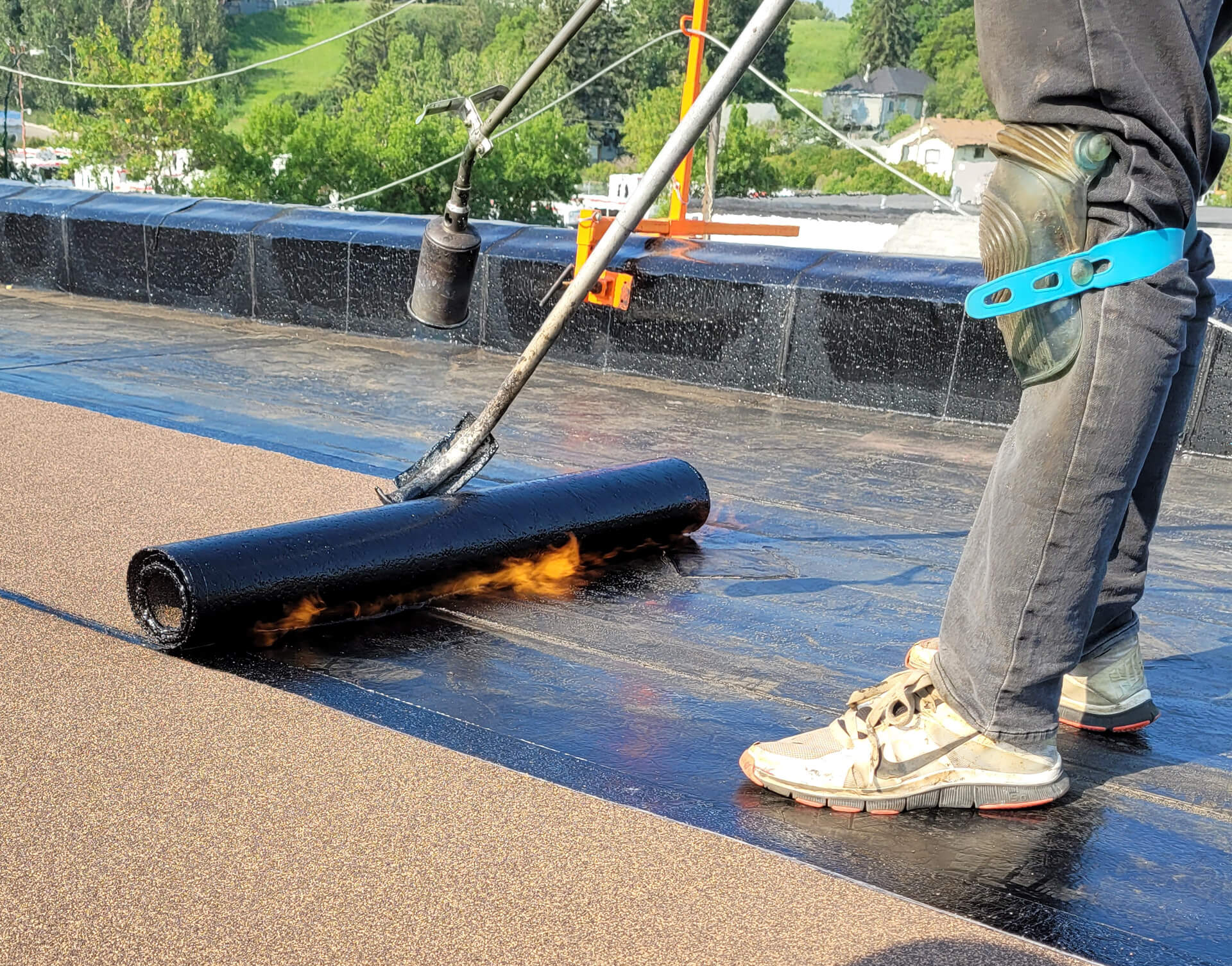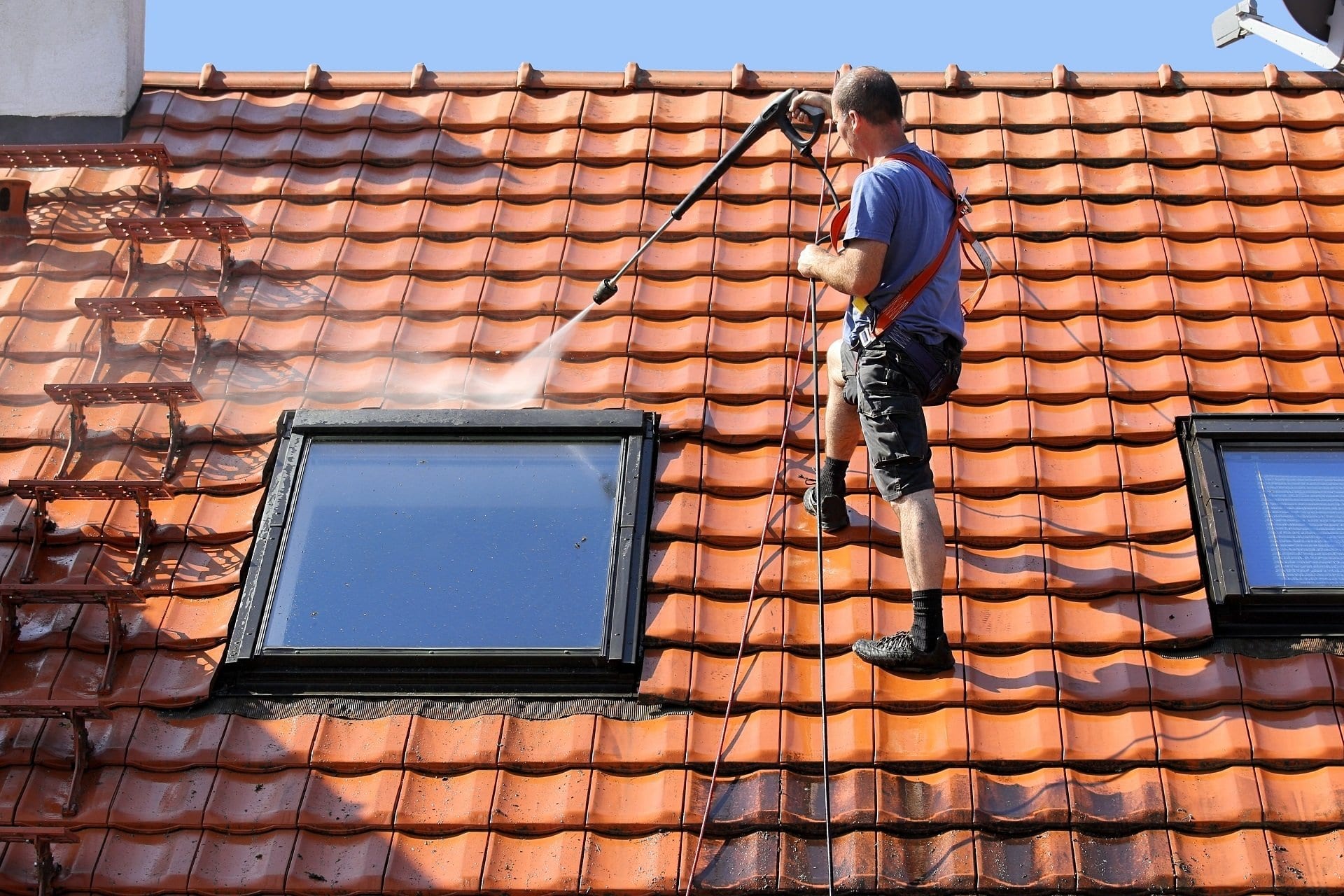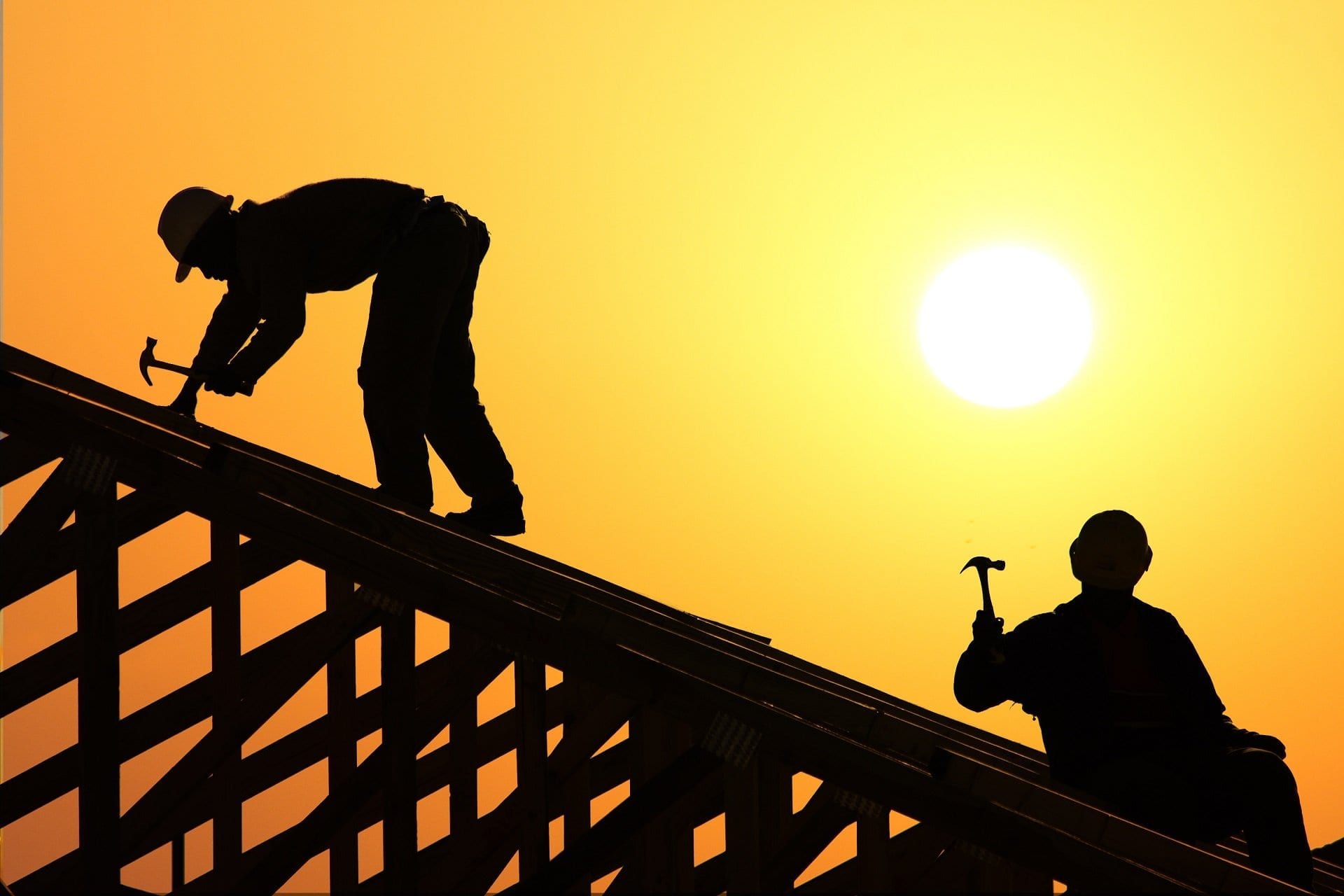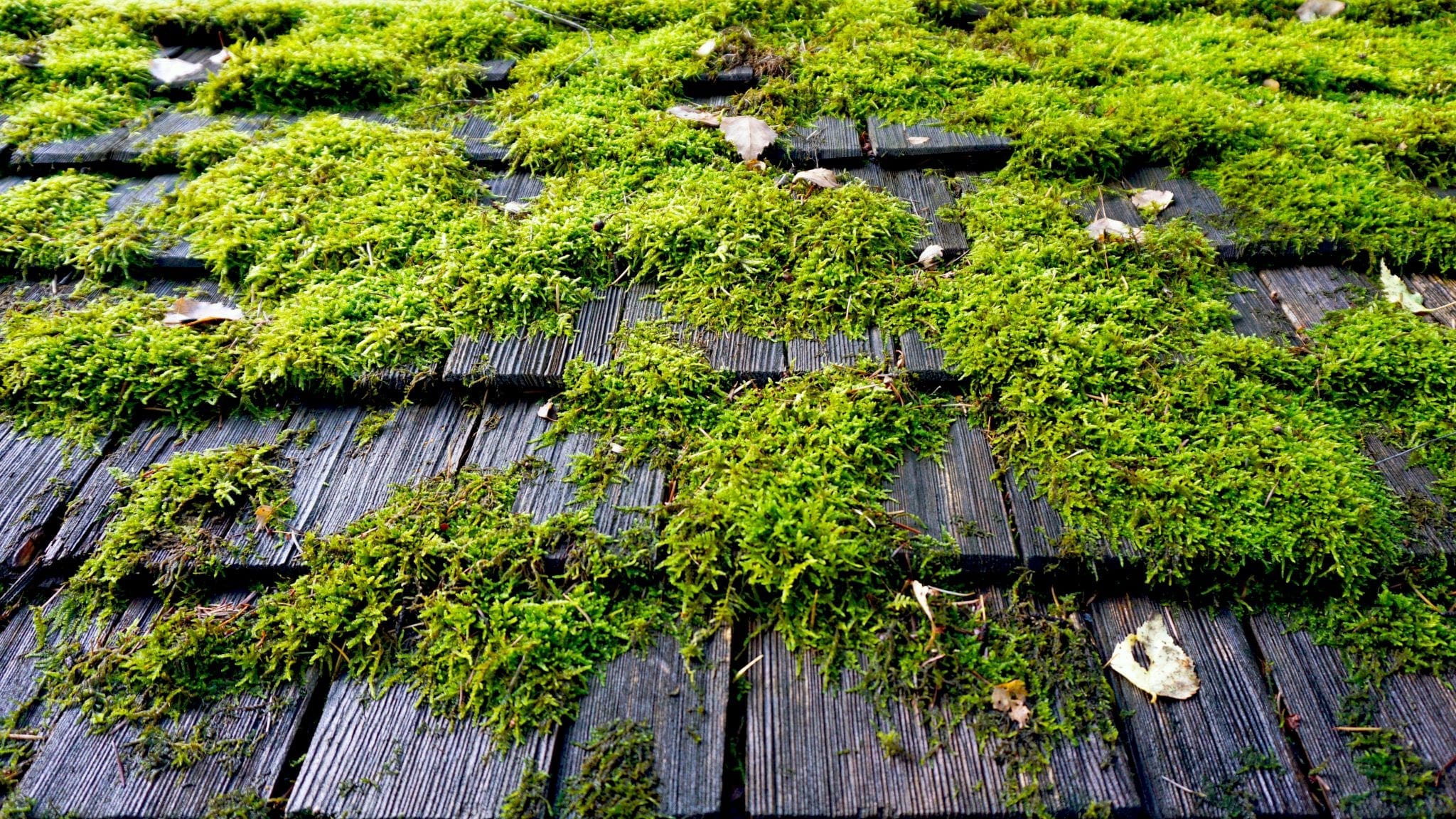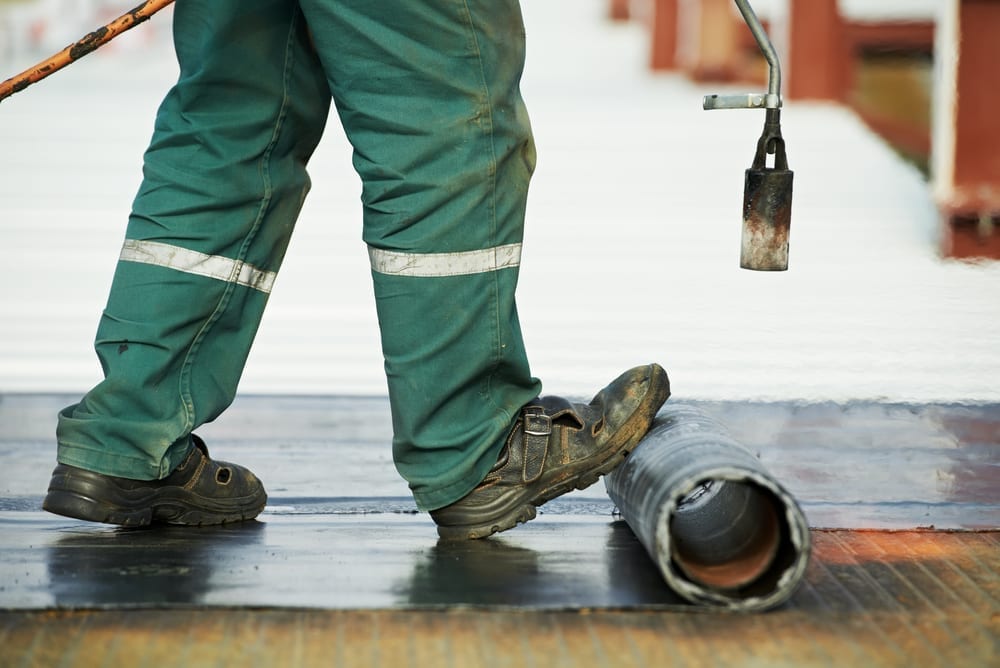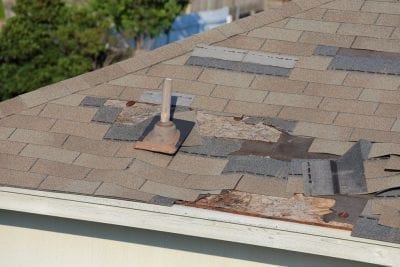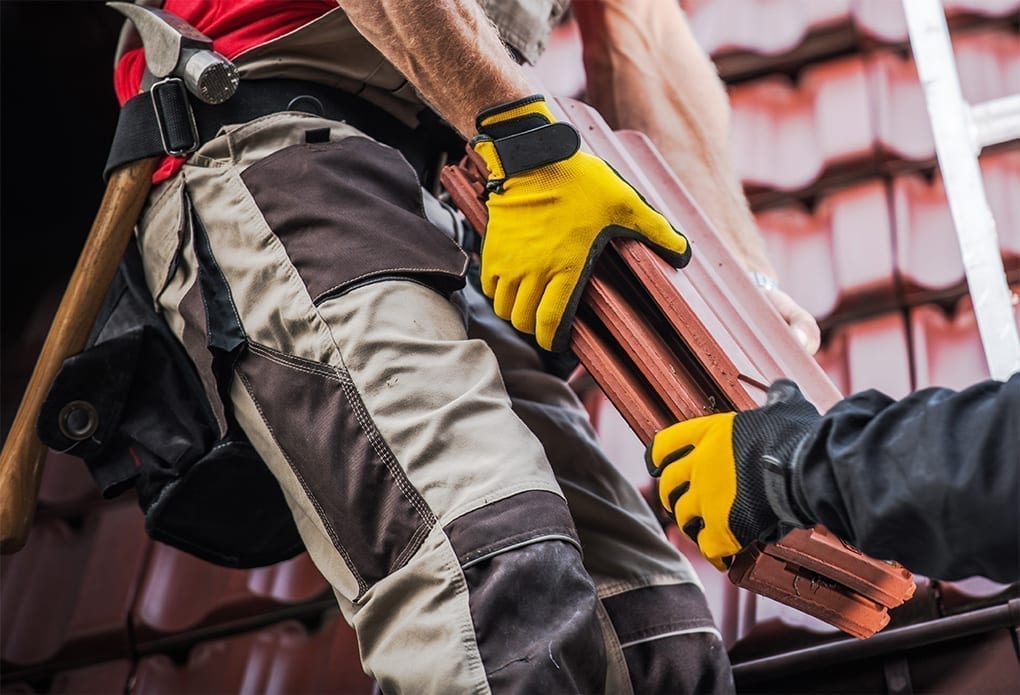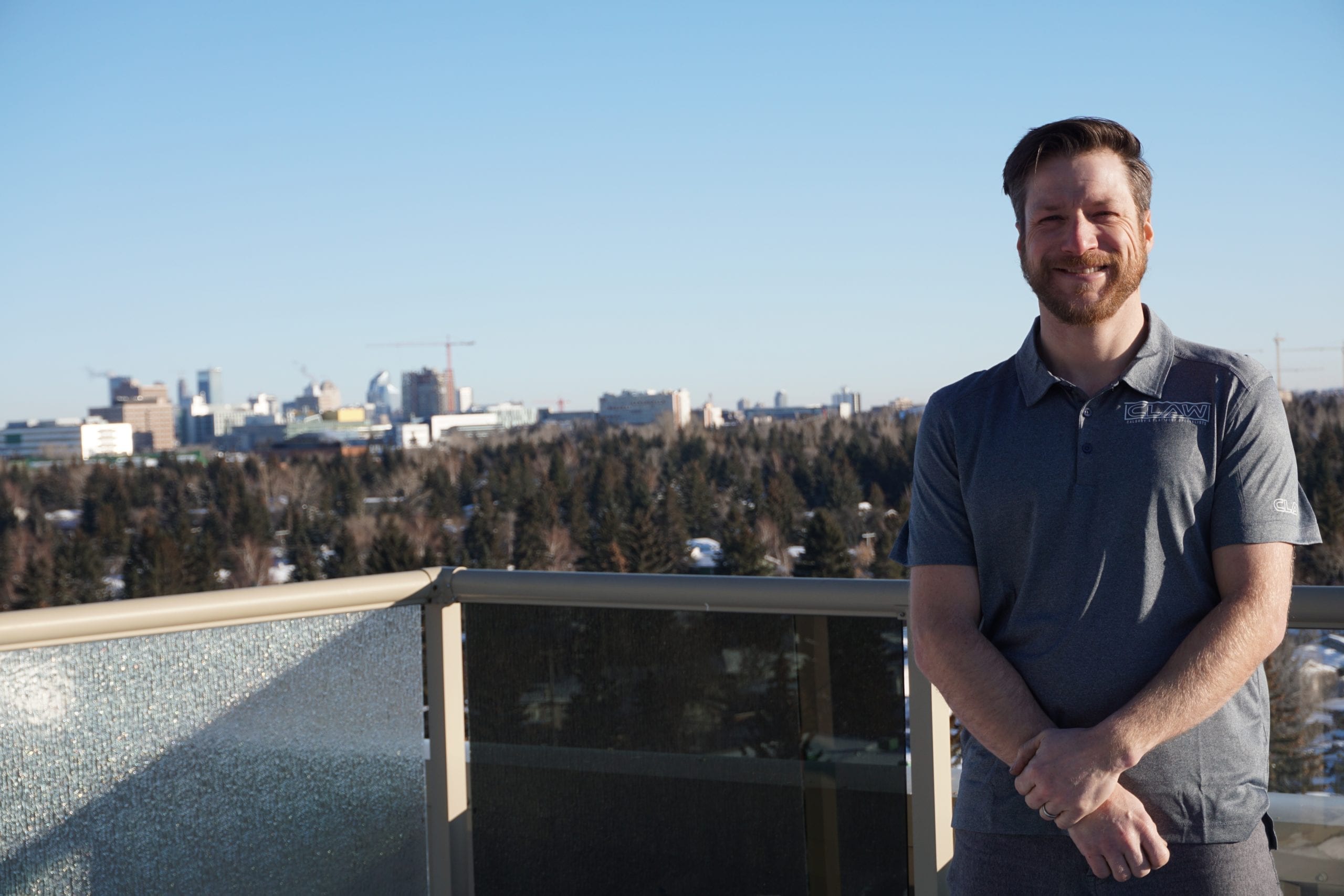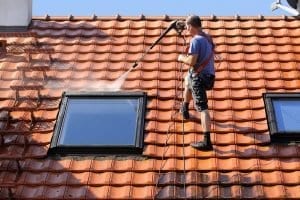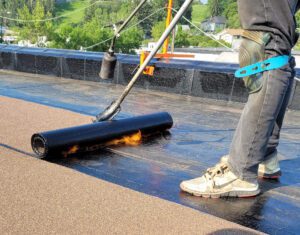Flat roofing is growing in popularity for both modern residential and commercial structures across North America. One of the top choices for flat roofing in recent years is TPO roofing, also known as thermoplastic polyolefin or single-ply roofing. This flat sheet-like material is easy to install for flat roofs and has proven highly effective, weather-resistant and environmentally friendly. Let’s explore how TPO roofing works and see how it compares to other flat roofing options on the market today.
What is TPO roofing?
TPO Roofing
TPO roofing has steadily risen in popularity since its emergence on the market in the early 90’s. It is valued for its energy efficiency but it is also economical and easy to install. It is often used on larger-scale, commercial flat roofing projects due to its size and efficiency. TPO roofing is a type of membrane roofing, made up of a single layer of thermoplastic polyolefin synthetics with a reinforcing scrim. The material is often a bright white colour which makes it an excellent way to reflect UV rays.
The two key flat roofing alternatives to TPO are metal roofing and modified bitumen roofing materials.
Metal Roofing
Metal roofing is highly durable and known for its strength. It is not typically used for flat roofing projects but it is seen on low slope roofs and is commonly used in modern residential architecture.
Bitumen Roofing
Bitumen roofing is long-lasting and often seen on flat and low slope roofs. Bitumen is made out of a type of asphalt and is self adhesive. On flat roofs it is applied in long strips and is reinforced and coated for durability and weather resistance.
The most common types of flat or low sloped roofing materials today are TPO (single-ply) and bitumen roofing. Metal is less common for completely flat roofing but can still be used on low slope roofs.
What are the benefits of TPO roofing?
Is TPO really all it seems to be? Here are some of the key benefits of this roofing material:
Environmentally Friendly
More and more consumers are looking for environmentally friendly alternatives to traditional materials. This is one of TPO’s major benefits, the material fibres used do not contain harmful chemicals such as chlorine which are harmful to humans, animals and the environment as a whole.
This chemical has been used in several older types of roofing material. Additionally, TPO is completely recyclable and older TPO materials can be broken down and used to create new membranes.
Lastly, TPO roofing is ENERGY STAR rated in most cases (manufacturer specific) and has been known to help with summer energy bills as it naturally reflects sunlight for a cooling effect in the home.
Resistant to Natural Elements
TPO roofing is an excellent option for those in geographic areas with hot summers and heavy sunlight. This is because, due to its natural light colour, the material is highly reflective and reflects sunlight away from your home. This contributes to the longevity of the material but it also helps to keep homes and businesses cool in the hot Calgary summers.
Strong
The one weak point for many types of flat roofing is the seam, where the materials fit together. While other materials risk leakage at these weak seam points, TPO roofing is strong and secure. The seams are hot air welded together which makes them incredibly strong, while alternative materials use less durable adhesives such as tape.
Easy to Install
TPO roofing makes work fast and efficient. The material comes in strips which are rolled and then carefully laid on the roof, along with layers of insulation. The thick strips make even the biggest commercial jobs faster due to the ease when it comes to installation.
What are the drawbacks?
Less Heat Resistant
Although excellent with varying temperatures, high heat is one of TPO’s weaker points. Some forms of TPO products can weaken or fail when exposed to consistently high heat for long periods of time.
Differing formulations
Different TPO manufacturers can use different materials in their TPO products and often, they are looking to save on costs. This means that you need to be choosy when it comes to these types of roofs and work with an experienced professional to ensure you get top quality roofing membranes.
Seam failures
In any roofing material that is applied in sheet form, there is the risk of seam failures. These can lead to leaks as a result. It is very important to choose an experienced roofing team to ensure proper installation in order to prevent seam failures as much as possible.
Commercial or residential – does it matter?
TPO roofing can be used on both commercial and residential projects. It is often used most frequently in commercial installments simply because it is so cost effective, and it is designed to cover large segments of roofing area.
However this does not mean that it cannot be used in the residential sphere and it is certainly a great option for Calgary homeowners or stratas.
TPO’s Top Competitors: EPDM & PVC
TPO roofing faces two key competing products in the flat roofing market. These are EPDM and PVC roofing.
EDPM Roofing
EPDM roofing stands for ethylene propylene diene monomer. This is a synthetic rubber which is highly durable, these types of roofs are often called ‘rubber roofs.’
EDPM is seen in general as the most durable roofing option for flat roofs, however it does come with its own drawbacks. It usually costs a bit more than alternatives such as built-up roofing or modified bitumen. However it is often used on new homes and residential projects.
PVC Roofing
PVC stands for polyvinyl chloride, this is another type of ‘rubber’ flat roofing which is similar in many ways to TPO. Both types of roofing are energy efficient and follow the same type of installation methods. On the downside though, PVC roofing contains chorines which can cause the material to breakdown faster, but PVC roofing has been the flat roofing standard for over 50 years, so it is likely to exist on many older commercial and residential flat roofed structures.
Price
- PVC tends to be the most cost;y material, followed by TPO and finally EPDM per square foot.
Longevity
- PVC lasts 15-30 years.
- EPDM lasts 5 – 15 years.
- TPO lasts 15 to 20 years
Recap: Should you choose TPO for your flat roof?
TPO is an excellent and modern option for those who are looking for a cost effective, long lasting and environmentally friendly roofing solution for flat roofs. It can be used for both residential and commercial projects and is fast and easy to install.
Get advice from the pros
Claw Roofing has extensive experience with flat and low slope roofing projects in Calgary and the surrounding areas. Our team of expert roofers would be happy to give you a quote and install your new flat roofing system. Visit our Flat Roofing page to learn more about the various options available and don’t hesitate to call and book a consultation with our team.

